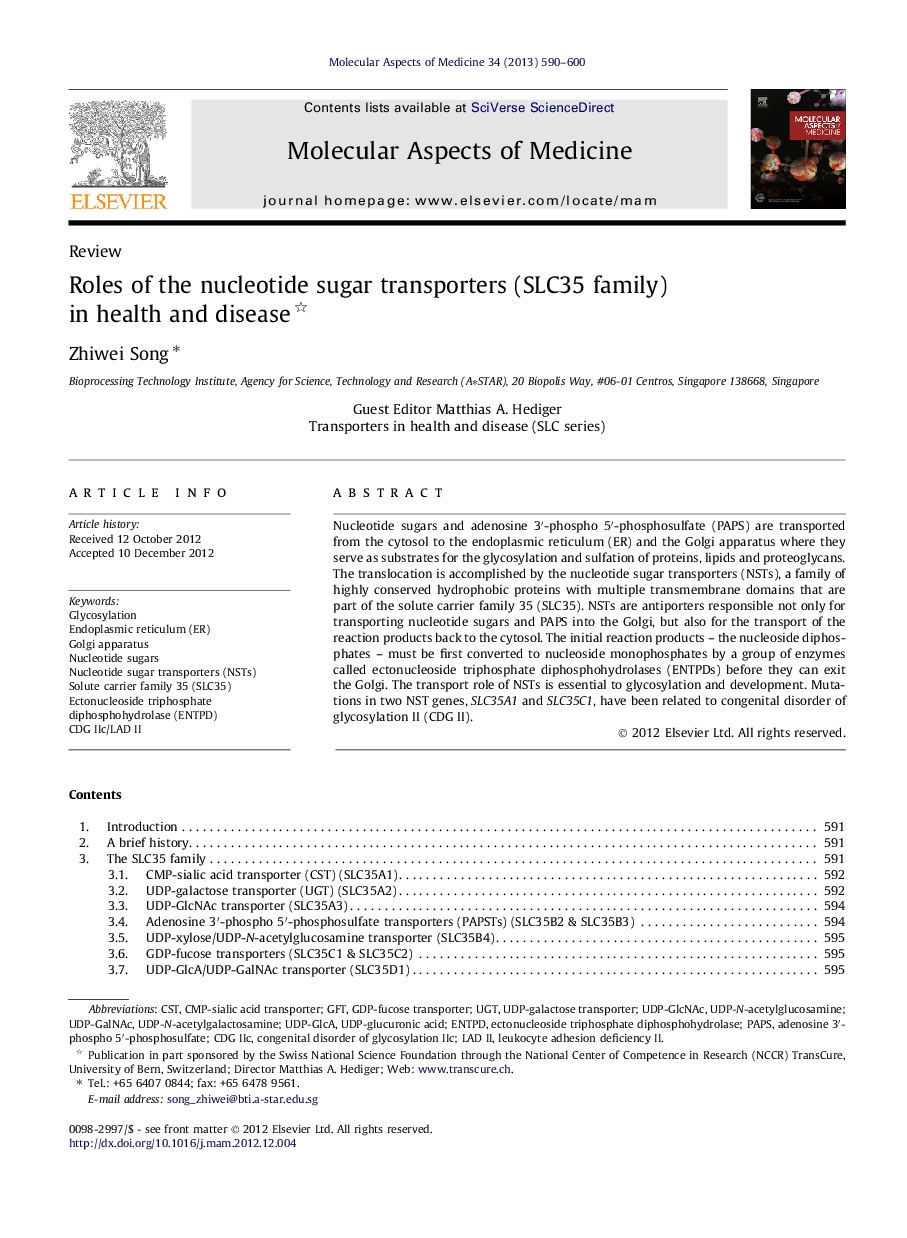| Article ID | Journal | Published Year | Pages | File Type |
|---|---|---|---|---|
| 8341574 | Molecular Aspects of Medicine | 2013 | 11 Pages |
Abstract
Nucleotide sugars and adenosine 3â²-phospho 5â²-phosphosulfate (PAPS) are transported from the cytosol to the endoplasmic reticulum (ER) and the Golgi apparatus where they serve as substrates for the glycosylation and sulfation of proteins, lipids and proteoglycans. The translocation is accomplished by the nucleotide sugar transporters (NSTs), a family of highly conserved hydrophobic proteins with multiple transmembrane domains that are part of the solute carrier family 35 (SLC35). NSTs are antiporters responsible not only for transporting nucleotide sugars and PAPS into the Golgi, but also for the transport of the reaction products back to the cytosol. The initial reaction products - the nucleoside diphosphates - must be first converted to nucleoside monophosphates by a group of enzymes called ectonucleoside triphosphate diphosphohydrolases (ENTPDs) before they can exit the Golgi. The transport role of NSTs is essential to glycosylation and development. Mutations in two NST genes, SLC35A1 and SLC35C1, have been related to congenital disorder of glycosylation II (CDG II).
Keywords
Related Topics
Life Sciences
Biochemistry, Genetics and Molecular Biology
Biochemistry
Authors
Zhiwei Song,
